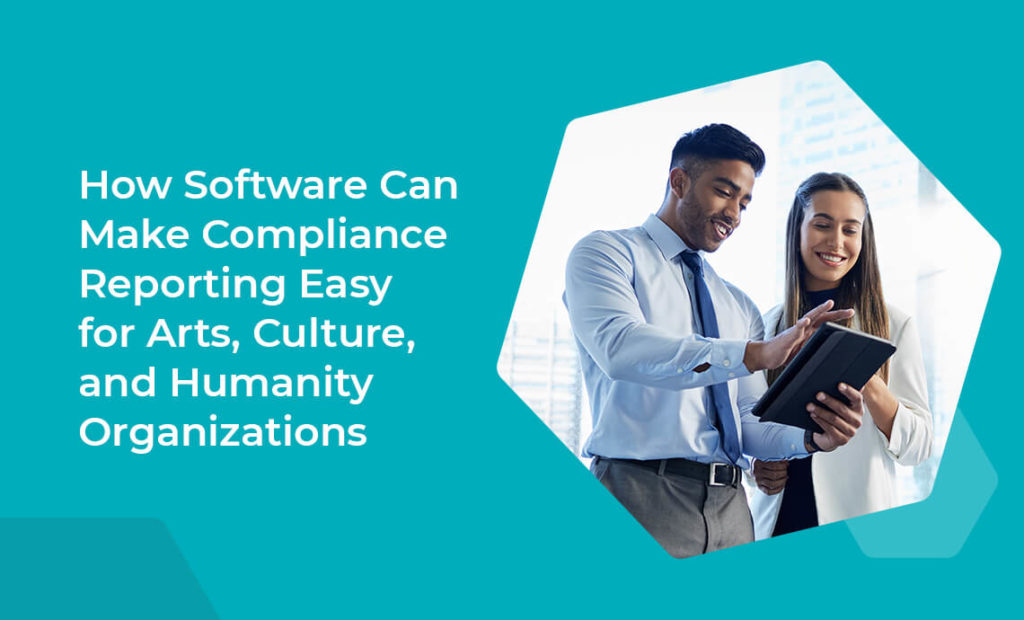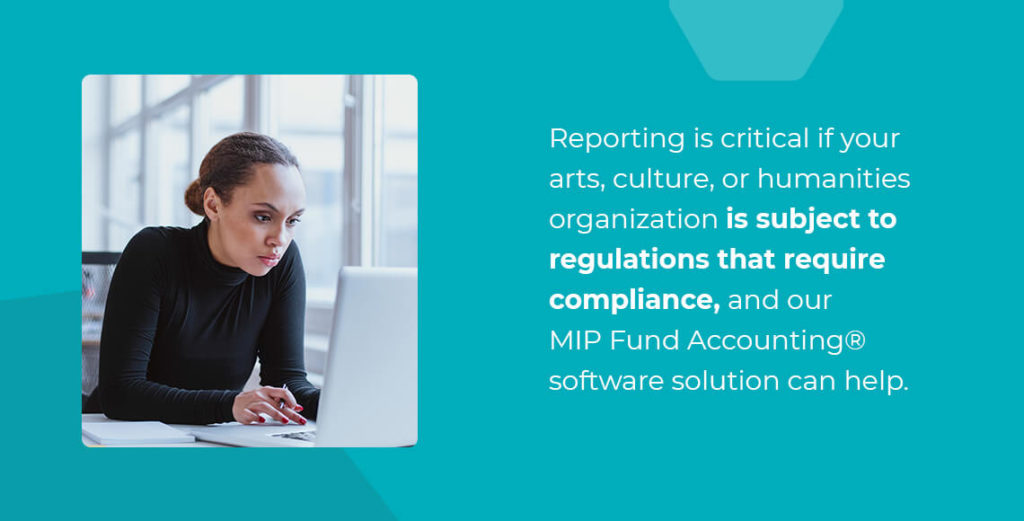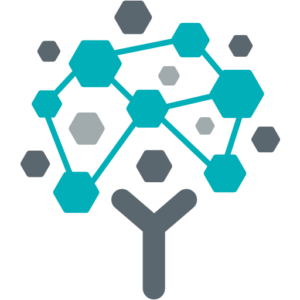Technology
How Software Can Make Compliance Reporting Easy for Arts, Culture, and Humanity Organizations

Compliance reporting is essential for any organization, but especially for nonprofits. Manual processes become more challenging and slow productivity as your organization grows, making it tricky to analyze your data. Nonprofit accounting software can help your arts, culture, or humanities organization with compliance reporting. You can readily manage an increased demand for services, several funding sources and donors, and changes to regulatory requirements.
At MIP Fund Accounting®, we provide our nonprofit accounting solution to several arts, culture, and humanities organizations. To implement software successfully, you should understand the basics of compliance reporting, which is why we’re covering what compliance reporting is, why it’s valuable, what a compliance report includes, and how MIP® can help.
What Is Compliance Reporting?
A compliance report illustrates your organization’s progress in complying with applicable regulations. Compliance officers often write these summaries, which go to multiple audiences, such as regulators, senior executives, and boards. A compliance report should address whether your organization follows regulations, whether your processes can reliably keep you compliant, and what you can or should do to improve compliance.
Compliance reports can take various forms. While some may have a designated structure, many take the shape that makes the most sense for your organization’s needs. Ultimately, the report’s content is more meaningful than its outline. The following are some examples of compliance reports:
- An update on the procedures and policies needed for HIPAA compliance.
- A review on the testing of security controls and documentation for Payment Card Industry Data Security Standards compliance.
- A detailed summary of the organization’s due diligence programs.

Reporting is critical if your arts, culture, or humanities organization is subject to regulations that require compliance, and our MIP Fund Accounting® software solution can help.
Do You Need Compliance Reporting?
Compliance reporting is essential for several reasons, including regulatory obligation, donor demand, audit requirement, proof of compliance, and internal use.
- Regulatory obligation: Regulatory obligation is a significant justification for compliance reporting in arts, culture, and humanities organizations. In some cases, your organization needs to file specific reports with regulators to show compliance with finance-related rules. Failing to generate compliance reports could lead to serious issues for organizations that must adhere to regulations.
- Donor demand: Though the law does not always require you to generate compliance reports, donors may ask for them. For instance, a donor may want to know more about your programs before supporting your organization and agreeing to partner with you. Compliance reports can answer any questions about your organization’s operations and adherence to any regulations.
- Audit requirement: If your arts, culture, or humanities organization is under audit, your compliance reports can prove your organization’s compliance with the relevant rules and requirements.
- Proof of compliance: Even for organizations that do not have a regulatory obligation, these reports can still be valuable. For example, if you need to certify your cybersecurity program’s effectiveness, generating reporting can be beneficial for showing the steps you have taken.
- Internal use: Additionally, you can use compliance reports internally to make more informed decisions about risk management, add new measures to remain compliant, and improve resource allocation.
Regulations frequently change, which can make it challenging to remain compliant. That’s why creating compliance reports and implementing the correct software is crucial.
What Does a Compliance Report Include?
A compliance report should be concise and use clear sentence structure and language. Arts, culture, and humanities organizations should include the following information.
- Items under review: The compliance report should include confirmation of what your organization reviewed and what you didn’t.
- The regulation the report refers to: Add a statement explaining the regulation.
- How you put together the report: The compliance report should also have a section explaining how you created it. Your organization will want to generate accurate compliance reports as quickly as possible, but manually compiling these documents can be a tedious, error-prone process. Fortunately, MIP® offers innovative reporting software solutions.
- An assessment of the compliance process: The compliance officer should also report on the compliance process’ effectiveness.
- Action items to enhance compliance: There are almost always opportunities to make progress, so this report should include action items the organization can take to improve compliance. However, this may not be possible if a regulatory report has a fixed structure.
- An overview of the assessment’s findings: This part of the report explains how well the organization is meeting the compliance obligation.
A compliance report aims to identify early warning signs of compliance risks. If your organization finds evidence of noncompliance, your report can allow you to determine next steps.
How MIP® Can Help
Your arts, culture, or humanities organization needs a funding solution that includes audit-ready financials, tracking, ledgers, and multiple budgets. If your organization still relies on manual processes and spreadsheets, it’s time to switch to software that can streamline things. Our robust nonprofit accounting solution helps you meet compliance requirements, manage proper security controls, maintain audit-ready financials, meet reporting requirements, track several budgets and revenue sources, and make more informed financial decisions. With our system’s features, your organization can grow seamlessly:
- Fund tracking
- Internal controls
- Centralized system
- Security controls
- A general ledger that is fully auditable
- Access to financial statement reports and activities
- Management of several budgets and multiple versions
When you implement fund accounting software from MIP®, you can better meet your organization’s needs and align with your auditors’ and grantors’ expectations.

Request a Demo of Compliance Reporting Software
At MIP®, we offer software that makes compliance reporting easy for arts, culture, and humanities organizations. For more than four decades, we have helped nonprofits, government entities, associations, and K-12 schools better work toward their missions. Organizations raise more than $1 billion each year using our software.
With our solution’s complete financial oversight, you can better engage with donors, operate more efficiently, and improve your financial decision-making. That’s why Trust Radius awarded us “Best Customer Support,” “Best Feature Set,” and “Best Usability.” When you’re ready to see our software in action, request a software demo of MIP Fund Accounting® today.
Share this post




